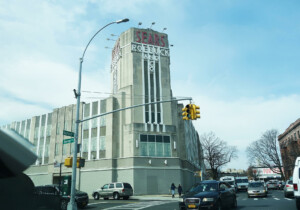The lull in tourism instigated by the pandemic’s social distancing measures has provided a much-needed respite for popular tourist destinations, and an opportunity for local residents to rethink their relationship with the leisure economy. Venice is one such city, that, coupled with rising sea levels and climate-induced damage to the surrounding Venetian Lagoon has turned a wary eye to the millions who annually visit the fabled city. In light of the growing shift in outlook, the Italian Ministry of Development has just announced a decree banning large cruise ships, which are defined as weighing more than 25,000 tons and measuring 600 feet long, from entering the city as of August 1.
The Republic of Venice at its peak extended from the shores of Veneto to the Bosporus Strait and the island Cyprus, and those overseas possessions played a crucial role in their dominance of the Mediterranean trade routes. Of likely greater importance was the Nuovo Arsenale shipyard that was capable of churning out two fully decked out galleys daily. Of course, those days are long gone, and the legacy of the Republic’s former maritime preeminence is displayed through its opulent architectural heritage, which forms a backdrop for the currents of mass tourism backed by global capital.
Local grassroots organization No Grandi Navi, which translates to No Big Ships, played a critical role in the decision that was further spurred by UNESCO’s recent threat to place Venice on its endangered city list if cruise line access continued unabated. The proliferation of oversized cruise ships is not only related to daily quality-of-life issues for Venetians who are forced to jostle with hordes of tourists through the city’s labyrinthine streets and canals but that of the city’s very survival. Venice is sinking, and the massive water displacement and wake caused by ships of such tonnage further erodes the city’s foundations and pollutes the environmentally precarious Venetian Lagoon.
The plan calls for the conversion of nearby industrial port Marghera, located within the Venetian Lagoon, into a temporary cruise terminal and such a project will cost just shy of $200 million and will not wrap up until 2022. Later this year, the port authority for the northern Adriatic Sea will host a design competition for a larger cruise terminal located outside of the Venetian Lagoon that will also function as a container terminal connected to the larger European road and rail network.
While the news is a step in the right direction, residents are under no perception that the coast is clear. A change in administration could imperil the construction of a new port, and, even if funding is realized, the project could arrive decades late like the infamous MOSE flood gate project.











